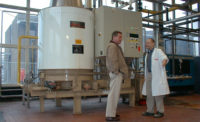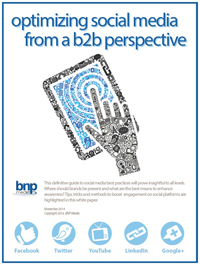A better germ-detecting mousetrap

Known as CANARY (cellular analysis and notification of antigen risks and yields), the technology grew out of work begun in 1997 by Todd H. Rider, a biologist with Lincoln Lab's biosensor and molecular technologies group. Funding came from the Defense Advanced Research Projects Agency, which wanted to equip US soldiers with a portable, easy-to-use field test for biological warfare agents such as anthrax and smallpox. Rider's genius was to leverage white blood cells' ability to detect bacteria and viruses. When antibodies in the cell bind to a germ, they trigger a calcium signal within seconds. Rider and his colleagues infused white blood cells from a mouse with bioluminescent protein from a glowing jellyfish. The protein glows in response to calcium, and that light becomes the signal noise of detected bacteria and viruses. The white blood cells have been further engineered to produce antibodies only to specific cells, rather than all foreign agents. In a paper published in the July 2003 issue of Science magazine, researchers reported detection of as few as 50 colony forming units (CFU) of Yersinia pestis, the bacterium that causes plague, in less than three minutes. The probability of detection for 200 CFU was 99%, with a false-positive rate of 0.4%.
In October 2003, Innovative Biosensors Inc. (IBI) licensed CANARY and related hardware-a centrifuge, computer with analytical software and a luminometer engineered by MIT staffers-with the intention of tapping the estimated $500 million food pathogen testing market and the $3 billion health diagnostic area. Spearheading the commercialization effort is Thomas Hazel, senior director of research and development. Dr. Hazel joined IBI iosensors last summer. The Michigan native was a graduate student at Northwestern University Hospital in Chicago and received his doctorate in genetics from the University of Illinois College of Medicine. He completed postdoctoral work at the National Institutes of Health. Dr. Hazel has held senior research positions in molecular genetics and cell structure. His areas of expertise include engineering of human cell lines and the manufacture and storage of cell-culture based reagents. Food Engineering recently spoke with him about CANARY and the rapid detection of food pathogens.

Hazel: It's a B cell-based detection system that is engineered to take advantage of the human immune system's ability to respond to pathogens. Instead of secreting a general antibody to any bacteria or virus, these cells are engineered to respond only to a specific strain. The antibodies are tethered to the cell membrane and are engineered to express a calcium sensitive bioluminescent protein. An enzymatic cascade is produced when the antibody comes in contact with a specific pathogen, resulting in light emission.
The test protocol is very simple and does not require a high level of technical expertise, since it was designed to have the capability to be conducted in the field. A centrifuge is used to spin a sample's cellular material to the bottom of a test tube. Liquid is removed, the B cells are added, and the cells are spun again to speed the reaction. The luminometer then detects the emitted light. CANARY can detect as few as 50 colony-forming bacteria in three minutes. In a complex medium like ground beef, we can detect less than 1,000 CFU.
If zero tolerance is required, an enriched culture has to be grown, which is why ground beef processors typically hold finished product for 48 hours while the culture is enriched at an outside lab. We can shorten the enrichment time to one shift. The assay protocol is simple enough to be done in-house by non-scientists.
FE: An E. coli load of 1,000 CFU would be extremely unusual in finished goods. What practical use, then, is there for a five minute protocol?
Hazel: It could be used for swabs of hides or sides of beef on the line. You can clean carcasses until you're blue in the face, but as soon as you eviscerate the animal, there's danger of E. coli 0157:H7 contamination from ingesta in the gut. The test's broadest application, though, will be the ability to reduce the enrichment time needed to detect to the 1 CFU level.
FE: What methods do laboratories currently use for pathogen detection?
Hazel: There are a number of tests for finished goods. The most sensitive is PCR, which stands for polymerase chain reaction. It is an enzyme-driven test in which the DNA signature of the bacteria is amplified in a test tube and detected in a machine. The enzyme strings together strands of DNA to build a detectable sample. The drawback is that the process takes a matter of hours, whereas our test can detect the targeted organism almost immediately.
FE: How sensitive is your test?
Hazel: The number of false positives is very low relative to PCR, and that is the test's strength. We run samples in tandem, which brings the percentage of false positives down below 0.3 percent. False negatives also are a concern, of course, and although we don't have any hard numbers yet, we're confident the ratio is very competitive with PCR.
FE: E. coli 0157:H7 is the most notorious food pathogen, but many more people die and are sickened from Listeria monocytogenes. Is there a biosensor for Listeria?
Hazel: Although an antibody has not yet been engineered to respond specifically to Listeria, we could generate a test within a matter of months. It's not a long process.
At this point, we're still determining what the food industry's needs are. We're focusing initially on E. coli 0157:H7 because of the zero-tolerance policy established by the government and the relatively high fatality rate. Additionally, the industry has validated antibodies for 0157:H7, so we can choose the best antibodies available and engineer the cell line for the test.
FE: Are you limited to detecting a single pathogen, or can multiple targets of concern be flagged?
Hazel: A range of bacteria, viruses or toxins can be detected with the test, and they can be multiplexed in a single test. If the cell was engineered to detect three pathogens, for example, and the test yields a positive response, you know one of the three pathogens was present, but you wouldn't know which one.
As a practical matter, multiplexing wouldn't be appropriate in food applications. It would be more appropriate for human health diagnostics
FE: What was the focus of development efforts in 2004?
Hazel: To commercialize BioFlash, we've been scaling up production of the biosensor with a quality control process that gives us confidence that the biosensors we send to end-users will perform within allowable parameters. Even though it's cell based, it's shipped on dry ice to end-users as a diagnostic reagent that's essentially ready to use. The cells live a couple of weeks refrigerated and longer when frozen. You simply thaw them, add to the sample and quantify luminescence.
FE: System hardware includes a mini-centrifuge, a luminometer and a computer with analytical software. Is this standard-fare lab equipment?
Hazel: Yes, it's off-the-shelf lab equipment in the first iteration. We're looking at opportunities for offering an integrated unit with all the necessary components and have developed a prototype. Other system refinements also are being developed. For example, the software is calculating the signal to noise ratio of the emitted light by the luminometer, and that requires some interpretation. We hope to simplify it to a yes-no response.
FE: Promotional brochures for IBI's rapid diagnostic system include the disclaimer, "For research only. Not for use in diagnostic procedures." What does that mean?
Hazel: It's simply a classification that is required for products that are not FDA approved. Approval is not a requirement for many food-pathogen tests.
We are in the process of gaining certification from the AOAC (the Association of Analytical Communities that validates analytical methods and lab QA programs and services). It takes about six months, and there's a cost to attaining certification that the test performs as advertised. Other voluntary validation tests are required in the EU and Japan, but for now, we're focusing on the US.
Looking for a reprint of this article?
From high-res PDFs to custom plaques, order your copy today!





